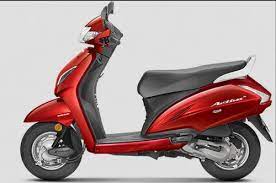Introduction:
In today’s fast-paced world, efficient and convenient transportation is of paramount importance. As urban areas continue to grow, the need for practical and affordable mobility solutions becomes increasingly crucial. Enter the “scooty,” a popular two-wheeled motorized vehicle that has revolutionized urban commuting in India. This article explores the rise of the scooty culture, its benefits, and its impact on urban mobility.
The Evolution of Scooties:
The concept of scooties traces its roots back to the early days of mopeds and scooters. However, it was in India where they truly gained popularity as an accessible mode of transportation. Initially targeted towards women riders, scooties soon became a preferred choice for both genders due to their compact size, ease of use, and affordability. Manufacturers began to design scooties specifically tailored to meet the demands of urban commuting, leading to their widespread adoption. Read more about the TVS Jupiter.
Key Features and Design:
Scooties are characterized by their lightweight construction, step-through design, and automatic transmissions. These features make them accessible to a wide range of riders, including beginners and those with limited riding experience. Scooties also boast fuel-efficient engines, typically ranging from 100cc to 125cc, ensuring economical usage for daily commutes. Additionally, they offer ample storage space, often under the seat, to accommodate personal belongings or small groceries, further enhancing their practicality.
Benefits of Scooty Commuting:
Scooties have numerous advantages that make them an appealing choice for urban commuters. Firstly, their compact size enables riders to maneuver through congested traffic, saving time and reducing stress. Scooties are also known for their excellent fuel efficiency, making them a cost-effective transportation option. Additionally, their automatic transmissions eliminate the need for frequent gear shifting, providing a hassle-free riding experience.
Another significant benefit is the reduced carbon footprint associated with scooty usage. As these vehicles consume less fuel compared to cars, they contribute to environmental conservation by lowering carbon dioxide emissions. Furthermore, scooties require less parking space, easing the burden of limited parking availability in crowded urban areas.
Scooty Culture and Societal Impact:
The growing popularity of scooties has led to the emergence of a vibrant scooty culture, especially among young riders. Scooty clubs and communities have sprouted up, providing a platform for enthusiasts to connect, share experiences, and organize group rides. This culture promotes camaraderie, empowerment, and a sense of belonging, particularly among women riders who appreciate the freedom and independence that scooties offer.
From a societal perspective, scooties have played a crucial role in enhancing mobility options for women. In a country like India, where safety concerns and cultural norms often restrict women’s travel, scooties have provided a convenient and reliable mode of transportation. They have empowered women to pursue education, employment, and social activities with greater autonomy and flexibility.
The Future of Scooties:
As the demand for eco-friendly transportation grows, manufacturers are increasingly focusing on developing electric scooties. These vehicles offer zero-emission mobility solutions, further reducing environmental impact. The advent of advanced battery technologies and increased charging infrastructure will likely contribute to the wider adoption of electric scooties in the future.
Additionally, technological advancements such as connectivity features, improved suspension systems, and enhanced safety features are expected to enhance the overall scooty riding experience. Moreover, with the rise of shared mobility services, scooties are likely to play a vital role in last-mile connectivity and short-distance transportation options within urban environments.
Conclusion:
Scooties have transformed urban mobility, offering a convenient, affordable, and eco-friendly solution for short-distance commuting. With their compact design, fuel efficiency, and ease of use, they have become an integral part of daily life for millions of people in India. Scooties have also played a significant role in empowering women and fostering a sense of community among riders. As the world continues to embrace sustainable transportation options, the future looks promising for scooties, with electric variants and advanced features set to shape the next phase of their evolution.
You may also like
-
Automatic Fruit Wine Bottling Line for Small Wineries: A Complete Guide
-
How Does Plywood HSN Code Decide the GST Rate for Traders and Manufacturers?
-
POS Terminal Type: Which Is Best for Your Business?
-
How to Choose Fixed and Portable Gas Monitors for Industrial Gas Detection?
-
Simplifying Trademark Registration in Hong Kong: What Businesses Need to Know

